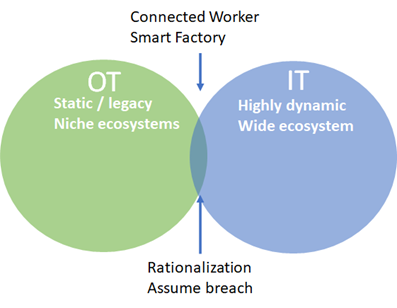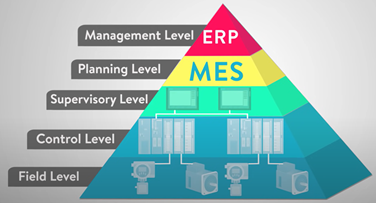In this article, we will set the scene for industry and 5G, describe 5G industrial use cases, discuss the timing of 5G, and how industrial companies can start leveraging it today.
Setting the scene for 5G in Industry 4.0
The industry has made several major transitions in the past before Industry 4.0:
1. Replacement of labor with steam
2. Mass production with electrification & globalization
3. Automation with computerization & electronics
Every transition was overestimated in the speed at which it came but underestimated in its full impact. Every transition was also surrounded by scepsis, uncertainty, and polarization. Still, the outcome repeats itself: new companies rose, and several established organizations declined by not being able to make the transition. The established organizations, which were able to make the right decisions in time, could adapt to the changing market dynamics. On the other hand, a lack of preparation and agility in a market where the rules had changed, resulted in write-offs and a lack of investment funds to remain competitive.
In Industry 3.0, the sophistication of proprietary automation hardware (typically from a single vendor) was the foundation of success. Now, to create a digital factory, the software application throughout its lifecycle is becoming the driver. Leveraging generic hardware, software & ICT components in a global ecosystem is becoming increasingly important. This approach is followed by many established players in the industry. However, the use of e.g., generic x86 hardware and legacy Windows operating systems are tightly integrated into their products. Because of this, the OT lifecycle needs to be followed, causing incompatibilities with other systems and an inability to upgrade/patch easily.
Industrial security
Consequently, the vulnerabilities in many deployed OT systems are on the rise. These vulnerabilities have long been obscure but are increasingly taken advantage of by criminal organizations. Since Stuxnet, they have been copying the exploits of state actors. ‘Luckily’, the use of ransomware in the supporting IT part of organizations is often the preferred attack surface by criminals over the OT domain.
Typically in the past, OT systems were air-gapped from the IT side or the internet. This created a strong security perimeter around the brownfield OT assets to keep production running. However, to now create a digital factory, OT assets on the machine floor will have to send data to other OT and IT systems to create factory transparency and improve efficiency beyond what automation could enable in industry 3.0. Many industrial companies are therefore busy securing and segmenting their OT networks (according to the Purdue model) to mitigate risk and reduce the exposure in case of a breach.
Current OT networks
Current enterprise OT networks however are characterized by low bandwidths, and they are aging in service management & performance. Underlying are aging copper infrastructures (DSL & UTP) and unlicensed spectrum with limited monitoring management systems. Security within the perimeter is often pre-internet with a limited community to identify and patch vulnerabilities. Consequently, many companies re-invest conventionally in people & assets because the perception is that there is no viable alternative.
Is the industry not becoming increasingly vulnerable to disruption? The gap between the OT and what’s technologically feasible or needed is widening.
How 5G fits in
5G offers the promise to be the ‘one wireless network to rule them all’, promoting IT & OT integration up to the PLC or even sensor level later on. This breaks the classical Purdue model, resulting in a much larger and open ecosystem (compared to industry connectivity), designed for advanced digitization in large & complex environments. This is important as any investment to enable the first applications, will also enable future business benefits/applications from various new parties.
Still, 5G is very much in development. This makes the identification of the first applications and architecture even more important, as you are also building the next generation infrastructure, (security) policies & way of working. It is naive to think that waiting and migrating in a big bang manner is a feasible or viable path for any company with large OT environments, like a production facility.
Belgium may be 12th and the Netherlands 4th in the DESI index regarding digitization, but it matters how a country comes out of this transition. Philippe and Jos work daily in a no-nonsense manner with several enterprises and operators to start with the vision and work backward towards practical implementations. Meaning collaborating to identify and act on what can be done today given the myriad of (im)possibilities.
In industry, we see that 5G enables two types of opportunities in parallel:

1. Enables new processes & applications to improve the productivity of people and the assets (in the factory, logistics center, … )
2. Allows rationalization & takes steps toward an ‘assume breach’ mindset.
This latter means not depending anymore on the outer perimeter (towards the IT domain), but also on lateral/process/control segmentation. This allows for more fine-grained monitoring capabilities, limitations in impact & procedures to react. If properly designed, 5G in the OT domain will also allow steps in security architecture.
Through co-created use cases and experiments, it can be demonstrated that steps forward can be taken by adding requirements in tenders & investments today.
5G Industrial use cases
5G enables and accelerates two large categories of use cases for the digital factories of the future.
- Connected workers
- Wireless Digital factory
Connected workers
In the drive to increase efficiency, the productivity of personnel is of great importance. Efficiency can be driven by many aspects: reducing mistakes, reducing time lost/waiting, providing the data & experts to allow process optimization without the need to make a ticket, or monitoring unauthorized access to unsafe areas. On top of this, companies are facing a scarcity of skilled workpeople and an overall need to reduce the number of people needed on-site.
From an IT management perspective, a number of systems have been vastly increasing where far fewer legacy systems have been rationalized while the IT budget is under pressure. One of the costly systems is using a separate Tetra or PMR network for mission-critical communication onsite. This system has proven its worth but is dated in many aspects (e.g., voice-only communication).
So, which use cases can 5G enable in a complex industrial environment? The advantage of 5G over cabled networks, Wi-Fi & Tetra is that 5G can provide it all. 5G can provide wide area coverage, broadband, wireless flexibility, and mission-critical resilience within one and the same network infrastructure. 5G also leverages a layered set of frequencies to provide areas with (redundant) coverage or capacity. In changing, complex environments with different usage these are great characteristics to have.
The use cases we have seen executable today are the following:
- Tablets in the field for document viewing and workflow management
- Assisted reality or augmented reality smart glasses for getting assistance from remote experts
- Wearables for safety & access, replacing NFC infrastructure
- Mission Critical Push-to-X (MCPTX) to allow migration, in your own time, from Tetra (or PMR) to cellular 5G
- Many video-based use cases:
- Remote video “see what I see” e.g., pushed shunting, tugboats, etc.
- Remote inspection by e.g., drones
- Remotely controlling a large machine in AR/VR
- Remote presence using robots on unmanned sites
Still, some of them may be far out from everyday use. But that does not mean that a minimal setup can’t be built today to prevent an increasing amount of investment in legacy approaches & systems.
Wireless digital factory
The wireless digital factory is a concept to get rid of the many complicated, cabled connections in production. It is a denominator of use cases but all with the goal to increase the factories’ overall productivity.
Industrial companies have different needs on their networks than traditional IT companies have. Reliability, data integrity, and cybersecurity are of the utmost importance. That is mainly the reason why cabled connections are used today.
5G promises the experience of a cabled connection while having the flexibility of a wireless one.
Being able to use secure and reliable wireless connections will decrease the complexity of industrial networks while increasing the overall production flexibility and efficiency. To give a concrete example, wireless connections can lower production line changeover times resulting in lower costs, stock levels, and lead times. Next to that, the increased flexibility can lead to less space being needed and more competitive pricing on small series production.
Let us give some examples of use cases within the wireless factory.
Industrial Internet of Things (IIoT)
Currently, there is only a small amount of data being sent from the factory floor to other industrial systems. Typically, only some sensor data or alarms are sent to the plant supervisor via the “Supervisory Control and Data Acquisition” or SCADA system. This low volume of data only serves the purpose to oversee that the production is running smoothly and taking manual action if not.
The existing industrial, wired networks were built for controlling the production line and keeping it going but not to gather the massive amount of data present in all the equipment on the factory floor. That data can be leveraged for further efficiency gains and to calculate the Overall Equipment Efficiency (OEE). If you currently want to e.g., add sensor equipment to measure and improve the quality or availability of your production line, it can prove difficult to draw cables there. A 5G network can provide wide area coverage and transmit vast amounts of data wirelessly & reliably.

Be aware that if you want to leverage that data in other higher-level systems in the industrial automation stack and truly become a digital factory, a new industry 4.0 architecture will be needed. This is to avoid costly custom system integration between the different automation layers such as the MES (Manufacturing Execution System) for production planning or ERP (Enterprise Resource Planning) for business management. We will write a separate article to zoom in on this later as this also has some security considerations to take into account.
Wireless factory automation communication
Factory automation and control communication lines have evolved from serial Fieldbus communication protocols to industrial ethernet protocols nowadays. Some examples of those protocols are PROFINET and PROFIsafe, Modbus TCP, EtherCAT, etc. These industrial protocols need real-time, low latency, and deterministic communication to work. Therefore, they are typically used on cabled connections. Some of them have been run on an industrial wireless LAN before when no other possibility was available. But typically, to do this, latency and safety thresholds are increased for it to work.
5G will bring a set of features to make these run wirelessly, without compromises, and on a large scale. Examples of these features are:
- 5G Ultra-Reliable Low-Latency Communication (uRLLC)
- 5G LAN: to allow ethernet frame communication for industrial protocols between predefined groups of devices, besides the normal IP packet communication.
- Network slicing: full virtualization of the network with resource reservations for critical communication and the possibility to set different (e.g., radio) parameters on a part of the network.
PROFINET on a low latency 5G Standalone (SA) private network has already been successfully set up in a demo environment by Phoenix Contact and Proximus with the help of Philippe. Read the article in Dutch or English.
Automated Guided Vehicles & Autonomous Mobile Robots
These can take many forms. You can have Automated Guided Vehicles (AGV) driving through the plant to carry goods, Autonomous Mobile Robots (AMR) doing routine inspections, or digitize analog assets such as legacy pressure gauges. Drones are also increasingly used for inspection of large infrastructure assets to do preventive maintenance and increase overall availability and productivity. Next to these obvious ones, we are starting to see multi-axis production robots, getting their instructions wirelessly instead of running cables alongside the arms of the robot which may tear and result in costly production downtime.
As you can imagine, these vehicles and robots cannot always be cabled. They need to be free to go where they are needed. To make them run fully autonomous, a reliable, low-latency wireless network will need to be in place.
Check out our article about the Boston Dynamics Spot robot dog controlled remotely over a private 5G standalone network.
Timing of 5G in industry
5G is a denominator of technology and will last us, like 4G, over a decade. Continuous improvements to the technology are made in the form of releases (by 3GPP). So don’t expect all to be available from day one. Below we will show you some considerations and timings that are important for industry use:
5G Spectrum
5G spectrum auction for the 3.5 GHz band, which is the main capacity band for 5G has not been planned yet in the Netherlands. Other frequencies (700, 1400 and 2100) have been auctioned. In Belgium only partial test spectrum was available before. The spectrum auction should now take place in June 2022 (as of the time of writing).
In some EU countries there is or will be spectrum for industrial implementations. In others the spectrum of telco operators needs to be re-used or rented.
5G Standalone device compatibility
As the time of writing more and more devices have come to market with true 5G standalone capabilities. Before devices could only do 5G non-standalone which mainly gives a speed increase.
5G Standalone public networks
Almost all current public networks are 5G non-standalone networks. This means a 4G core is still used in the data center of the network operator and does not allow full 5G capabilities.
Operators still have to migrate from a 4G core (or non-standalone 5G setup) to a 5G core (5G standalone setup).
Private 5G networks on the other hand can immediately be deployed in 5G standalone.
5G Release 16
Currently, all 5G networks are release 15 networks. Release 15 was the first 5G technology release and covers the baseline for 5G. Release 16 is the next release and will bring many enhancements on 5G to enable e.g., network slicing, ultra-reliable low latency communication (uRLLC), etc.
To scale low latency communication to an entire factory, 5G release 16 will be needed. Full uRLLC will even need release 17 and 18. Latency will get lower and more stable over time but with release 16 a lot will already be possible.
5G LAN is another feature in release 16 that will enable Ethernet-based communication between groups of assets for the use of industrial protocols or to segment traffic both horizontally and vertically according to the Purdue Model.
Release 16 was finalized by mid-2020 and we expect by mid-2022 that devices and networks will be available. Don’t worry though to invest already in network infrastructure, release 15 networks will be software upgradeable to release 16.
How to start with 5G in industry
5G creates big opportunities in industry for business & infrastructure development. Not already preparing and gaining experience now will eventually cost more to the overall organization. Given the impact, companies need to invest in starting small and getting the benefits, policies, partners, and requirements in place. As it requires a different mindset and skilled people in 5G are still rare, doing this in-house will be a challenge.
Some simple tips to start of:
- We advise starting now with your first projects.
- Ask your providers to bring a demo setup to your plant or test your setup in a 5G lab environment in your country.
- Create a small innovation team with high-performing people from different departments.
- Start with either connected worker, remote assistance, MCPTX, IIOT as non-critical addons, temporary wireless connections or first AGV PoCs. The full wireless factory automation communication still requires some new 5G releases to be used at scale.
- Identify the (future) segmentation of your OT-IT system and management and how 5G will fit in the design you are making today.
- Start small, learn, bring to production, and scale up.
- Ensure (insight in) how service coverage is today as it allows some of the use cases already if sufficient. In some cases, private networks can be deployed on top of existing indoor public coverage.
- Partner on 5G – with those parties which offer you a tangible & credible business case.
- Ensure 5G is addressed in the renewal/procurement of services & HW. Challenge vendors relying only on proprietary bus-type, fixed, or unlicensed spectrum protocols.
The industry world is a no-nonsense world. Seeing is believing. Most industrial companies and people still need to experience 5G applications for themselves.
If you need more advice or people to guide you in this process, feel free to contact us.






